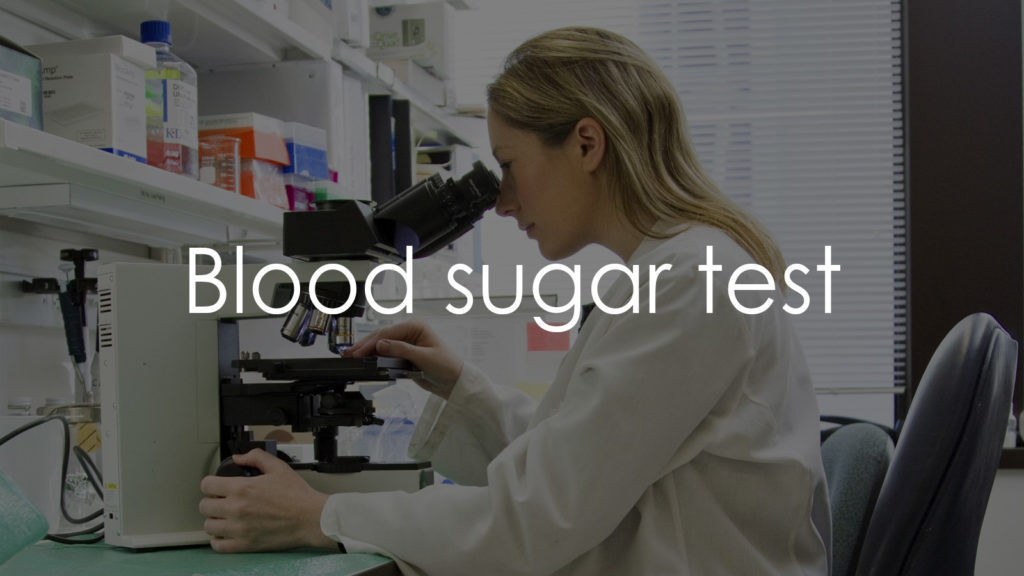A blood sugar test, also known as a blood glucose test, measures the amount of glucose in your blood. Glucose is the primary source of energy for the body’s cells, and its regulation is crucial for maintaining health. Blood sugar tests are vital for diagnosing and managing conditions such as diabetes, prediabetes, and hypoglycemia. This article will explore the purpose of a blood sugar test, the procedure for conducting it, the interpretation of results, and what to consider when receiving the final report.

Why is it needed?
Blood sugar tests are essential for several reasons:
- Diagnosing Diabetes and Prediabetes: Identifying high blood sugar levels can indicate diabetes or prediabetes, allowing for early intervention and management.
- Monitoring Diabetes Management: Regular testing helps manage diabetes by ensuring blood sugar levels are within the target range.
- Identifying Hypoglycemia: Detecting low blood sugar levels can help diagnose hypoglycemia, which can be a serious condition if untreated.
- Assessing Risk Factors: People with a family history of diabetes, obesity, or other risk factors should regularly check their blood sugar levels.
- Evaluating Treatment Efficacy: Monitoring the effectiveness of medications and lifestyle changes in controlling blood sugar levels.
There are several types of blood sugar tests, each with specific purposes and procedures:
Fasting Blood Glucose Test
- Purpose: Measures blood sugar levels after an overnight fast.
- Normal Range: 70-99 mg/dL.
- Procedure: The patient fasts for at least 8 hours before the blood sample is taken.
Oral Glucose Tolerance Test (OGTT)
- Purpose: Evaluates how the body processes glucose over time.
- Normal Range: Less than 140 mg/dL two hours after drinking a glucose solution.
- Procedure: The patient fasts overnight, a baseline blood sample is taken, then the patient drinks a glucose solution. Blood samples are taken at intervals over the next two hours.
Random Blood Glucose Test
- Purpose: Measures blood sugar levels at any time, regardless of when the patient last ate.
- Normal Range: Less than 200 mg/dL.
- Procedure: A blood sample is taken at a random time.
Hemoglobin A1c Test (HbA1c)
- Purpose: Provides an average blood sugar level over the past 2-3 months.
- Normal Range: Less than 5.7%.
- Procedure: A blood sample is taken, and the percentage of hemoglobin coated with sugar is measured.
Continuous Glucose Monitoring (CGM)
- Purpose: Provides real-time, continuous monitoring of blood sugar levels.
- Procedure: A sensor is inserted under the skin, usually on the abdomen or arm, and measures glucose levels in the interstitial fluid.
Procedure for taking the test
The procedure for blood sugar tests generally involves the following steps:
- Preparation: Depending on the test, patients may need to fast for 8-12 hours.
- Sample Collection: A healthcare professional will draw blood from a vein, typically in the arm, using a needle and syringe or a vacutainer system. For CGM, a sensor is placed under the skin.
- Processing: The blood sample is analyzed in a laboratory, or in the case of CGM, data is continuously recorded and transmitted to a device.
- Completion: The entire process for blood draw takes a few minutes, while CGM involves wearing the sensor for several days or weeks.
Interpretation
Interpreting blood sugar test results requires understanding normal ranges and their implications:
Fasting Blood Glucose Test
- Normal Range: 70-99 mg/dL.
- Prediabetes: 100-125 mg/dL.
- Diabetes: 126 mg/dL or higher on two separate tests.
Oral Glucose Tolerance Test (OGTT)
- Normal Range: Less than 140 mg/dL two hours after glucose intake.
- Prediabetes: 140-199 mg/dL.
- Diabetes: 200 mg/dL or higher.
Random Blood Glucose Test
- Normal Range: Less than 200 mg/dL.
- Diabetes: 200 mg/dL or higher, along with symptoms of diabetes.
Hemoglobin A1c Test (HbA1c)
- Normal Range: Less than 5.7%.
- Prediabetes: 5.7%-6.4%.
- Diabetes: 6.5% or higher.
Continuous Glucose Monitoring (CGM)
- Target Range: Generally, 70-180 mg/dL, but targets can vary based on individual treatment plans.
Conclusion
Blood sugar tests are crucial for diagnosing and managing diabetes, prediabetes, and hypoglycemia. They provide essential information about how well the body regulates glucose and help guide treatment decisions. Regular monitoring and understanding of blood sugar levels can significantly improve health outcomes and quality of life. Thus, blood sugar tests remain a cornerstone of preventive health care and chronic disease management.